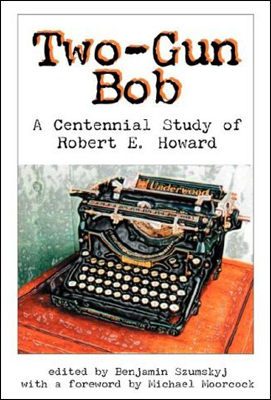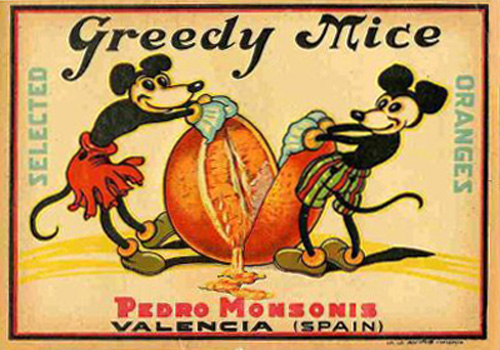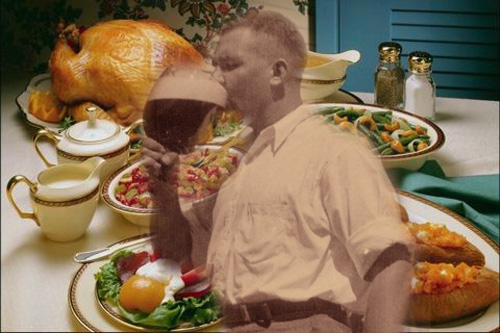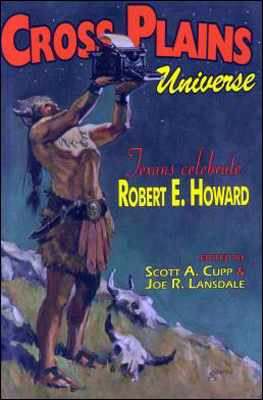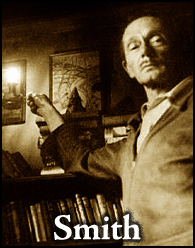The 2007 Cimmerian Awards — Balloting is OPEN
Saturday, January 20, 2007
posted by Leo Grin
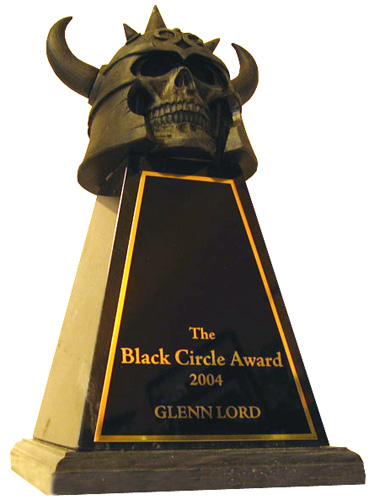
For the third straight year, The Cimmerian is proud to be presenting a set of Awards honoring Howardian achievements in the realms of research and scholarship. Voting for these awards is open to all readers and contributors to TC. If you have done this before, you know the drill. If not, read on, and begin participating in one of the most fun activities Howard studies has to offer.
All Cimmerian readers and contributors are encouraged to vote. You may or may not know it, but you have been earning voting power in these Awards all year long — every time you purchased an issue, contributed a letter or an essay, or helped out with my annual coverage of big Howard events. These activities earned you VOTES, which you can now apply to each award category. Here’s how it works:
1. First, calculate how many votes you have earned. Use the following guide:
1 VOTE for each issue of Volume 3 of The Cimmerian you have purchased.
2 VOTES for each letter published in The Lion’s Den for Volume 3.
3 VOTES for each essay or poem published in The Cimmerian for Volume 3.
2 VOTES for contributing pictures or anecdotes to TC‘s coverage for the June 2006 Robert E. Howard Days.
2 VOTES for contributing pictures or anecdotes to TC‘s coverage of the November World Fantasy Convention.
For this year’s voting, only Volume 3 (black and gold issues) count; latecomers who purchased back issues from Volume 1 and 2 cannot apply those old issues to this year’s voting. If you are a subscriber, feel free to add on the votes for the issues you are due to receive soon (November, December, Awards, and Index). Some people worry overmuch about this calculation, but don’t sweat it. Just tell me what number you came up with and how you did it, and I will check this against my records and let you know if it needs tweaking. A single vote either way usually isn’t enough to swing a category to a different winner — except in 2004 when Steve Tompkins pulled a Kennedy/Nixon on me and took the Third Place Hyrkanian by a single vote, the bastard. (Kidding, Steve, kidding. Bastard….)
2. Now that you have your vote total, you can browse through the List of Nominees and start selecting your choices. Remember, you get to apply your total amount of votes to each category (for instance, if you have calculated 20 votes, you get to apply 20 to the book category, twenty to the First Place Essay category, 20 to the Second Place Essay category, etc.) Also remember that within each category you may split up your votes any way you wish (10 votes to the first nominee, five to the second, five to the third, etc.) If there is a category where you have no opinion (if you didn’t read any of the nominees, for instance), just put ABSTAIN for that category.
3. Next to your vote for each category, take a minute and write a paragraph about why you voted the way you did. I print these comments anonymously in TC‘s annual awards issue. It’s a great help to me, and it gives the nominees some much-appreciated feedback on their work, even when they don’t win. Best of all, if you submit such comments with your votes, you get a free Limited copy of the annual Awards issue. So don’t just send in votes, toss some commentary into the mix for each category.
4. Once you have decided on how your votes are to be allocated, e-mail me your ballot with your list of winners and commentary. Here’s a sample ballot that you can use as a template:
______________________________
CIMMERIAN AWARDS BALLOT
NAME:
NUMBER OF VOTES I HAVE CALCULATED FOR MYSELF:
ATLANTEAN AWARD (Best Book — Single Author): [winner(s) and comments]
VALUSIAN AWARD (Best Book — Anthology): [winner(s) and comments]
HYRKANIAN AWARD — FIRST PLACE (Best Essay): [winner(s) and comments]
HYRKANIAN AWARD — SECOND PLACE (Best Essay): [winner(s) and comments]
HYRKANIAN AWARD — THIRD PLACE (Best Essay): [winner(s) and comments]
AQUILONIAN AWARD (Best Periodical): [winner(s) and comments]
STYGIAN AWARD (Best Website): [winner(s) and comments]
VENARIUM AWARD (Emerging Scholar): [winner(s) and comments]
BLACK RIVER AWARD (Special Achievement): [winner(s) and comments]
BLACK CIRCLE AWARD (Lifetime Achievement): [winner(s) and comments]
BLACK CIRCLE NOMINEE (who you want on next year’s Black Circle ballot): [winner(s) and comments]
________________________________
It’s that simple. When I receive your ballot, I will record your votes in a spreadsheet. All voting is kept strictly confidential, and as editor of TC I myself do not vote. The balloting will remain open throughout February, and close at midnight on March 1, 2007. The winners will subsequently be announced live at the 2007 Robert E. Howard Days festival, on Friday Night after the banquet, at the pavilion. Be there or be nowhere.
There have been a few slight changes in the rules this year, which I will mention here. Most importantly, the Black Circle Award rules have been revamped. Now each year there is a BLACK CIRCLE AWARD category but also a BLACK CIRCLE NOMINEE category. The NOMINEE category is used to vote people up into the AWARD category for the following year — someone needs to get 25% or more of the NOMINEE vote to get pushed into the AWARD category the next year. The AWARD category is now winner-take-all. Therefore: since last year Rusty Burke and Don Herron were the only ones to pass 25%, they are the only two nominees in this year’s Black River Award category. That contest is winner-take-all. Meanwhile, for the BLACK CIRCLE NOMINEE, put in the name(s) of who you would like to see make the winner-take-all Black Circle Award contest next year. Clear as mud?
I have also decided to loosen up the Essay rules a bit, to allow Book Introductions that are lengthy and substantive enough to function as standalone essays in their own right.
The past two years have seen around half of the total readership of The Cimmerian vote. I would love to get that percentage up this year. If you are at all confused about the voting, feel free to pop me an e-mail and I will guide you through it. It really is a lot of fun if you at all care about Howard studies and the various items released in the field. Feel free to pepper the various e-mail lists with discussions about the various categories and nominees — make your cases and generate groundswells for your favorites. Last year saw an unprecedented number of Howard books and essays hit the streets, so the categories are as competitive as they’ve ever been. Your favorite scholars need your help and your vote. You’ve got a whole month to think it over and send in your ballot. Have fun, e-mail me with any questions, and stay tuned this June for the winners.
UPDATE: You may have noticed that the ballot has been getting tweaked all day as various people have alerted me to oversights or questions requiring some judgment calls. For instance, I’ve taken Leon Nielsen out of the Venarium Award category, as both his book and one of his articles are technically 2007 releases due to be up for awards next year. Therefore I’m saving Leon’s appearance as a Venarium contender for the 2008 awards. A few other overlooked items have been added as well — how could we have forgotten to put Novalyne Price on the Black Circle ballot?! It looks as if the ballot is pretty solid now, though, and won’t be changing from here on out.

